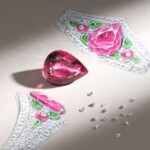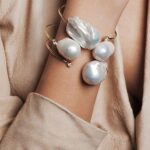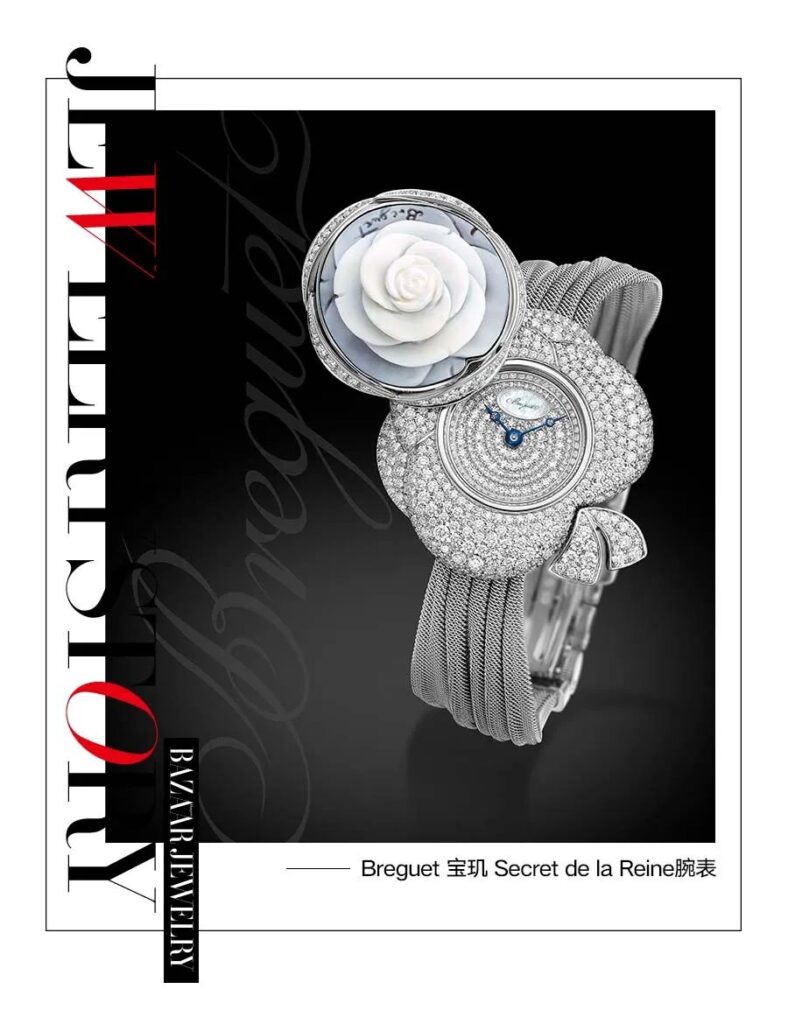
Do you buy cultural and creative products like fridge magnets or badges when traveling? Various creative products have been going viral, such as the “unconventional” items derived from the Gansu Museum’s collection, the delicate and adorable fridge magnets from the Suzhou Museum, and the once-sold-out “small pink stove” fridge magnet from the Nanjing Museum in 2023.

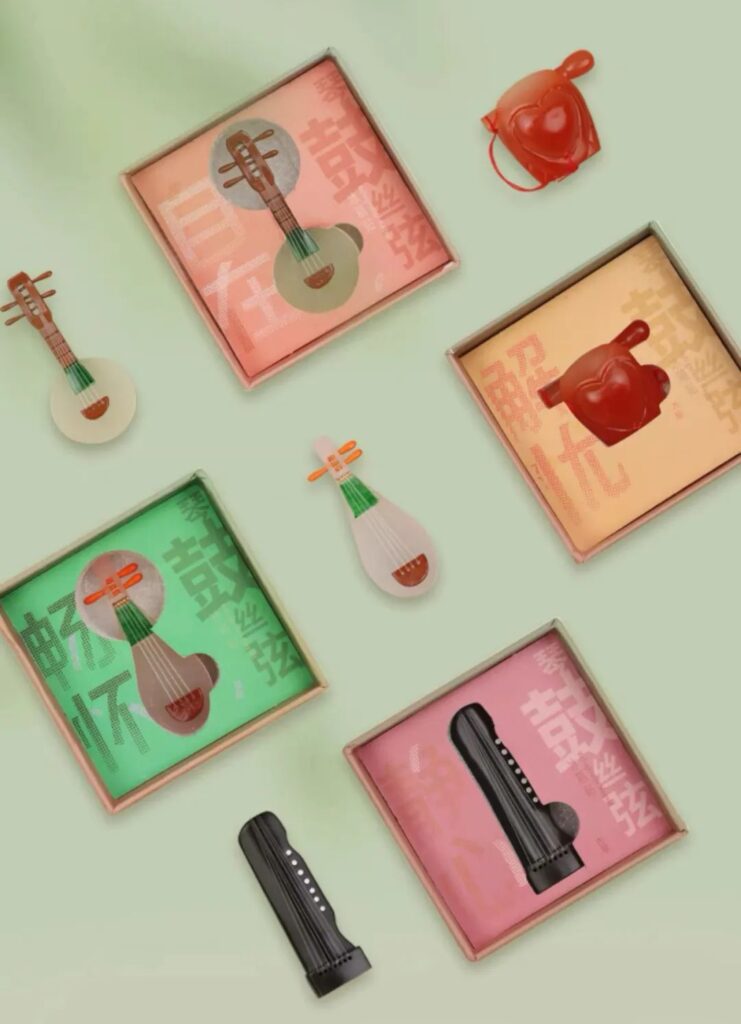

People from centuries ago also had their own cultural and creative products – Cameo jewelry. Artisans skillfully combined artistic creation with miniature carving techniques, using bas-relief methods to carefully carve and create color differences between the base and the carved surface, ingeniously highlighting the main image and showcasing its unique artistic charm.
In the 3rd century BC, banded agate entered Egypt and Europe through Alexandria. Craftsmen utilized the naturally distinct layers of banded agate for their creations, carefully carving the light-colored agate on the surface and exposing the dark agate as a background, using the dark color to accentuate the light-colored pattern.
Before this, carving art was mostly presented in intaglio form, used to make identity seals. The first true cameo jewelry piece was the Farnese Cup, commissioned by Ptolemy II.
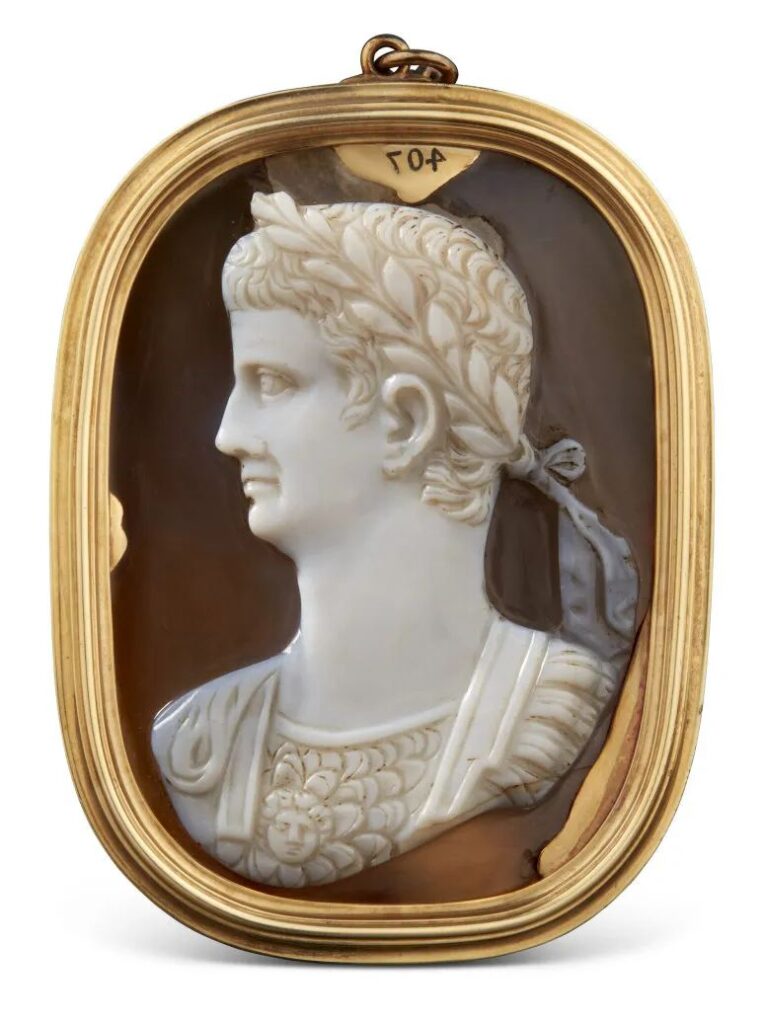
Carved agate pendant, sold for $352,800
The art of cameo carving spread from ancient Rome to various European countries. However, due to the scarcity of agate suitable for making relief carvings, cameos became even more precious. During the long medieval period, the iron-fisted rule of the church and the prevalence of religious styles intertwined to shape an art world centered on “God.” Simultaneously, the scarcity of agate suitable for cameo jewelry carving almost pushed it to the brink of silence and decline.
The Victorian era of the 19th century can be considered the peak of cameo jewelry development. Not only did the craftsmanship gradually mature, but the choice of materials and types of jewelry also became more diverse. Unlike earlier large cameo works, these were not just placed in cabinets for the appreciation of a select few, but were made into wearable jewelry.
Under Queen Victoria’s influence, cameos became popular among noble women, who were eager to wear cameo jewelry with their own portraits to showcase their unique feminine charm. Brooches and pendants became popular choices, with brooches typically pinned at the center of high-collared shirt necklines, creating a distinctive fashion style of the era. More expensive cameo pieces would have holes drilled on both sides and be adorned with diamonds and other gemstones to form a necklace.
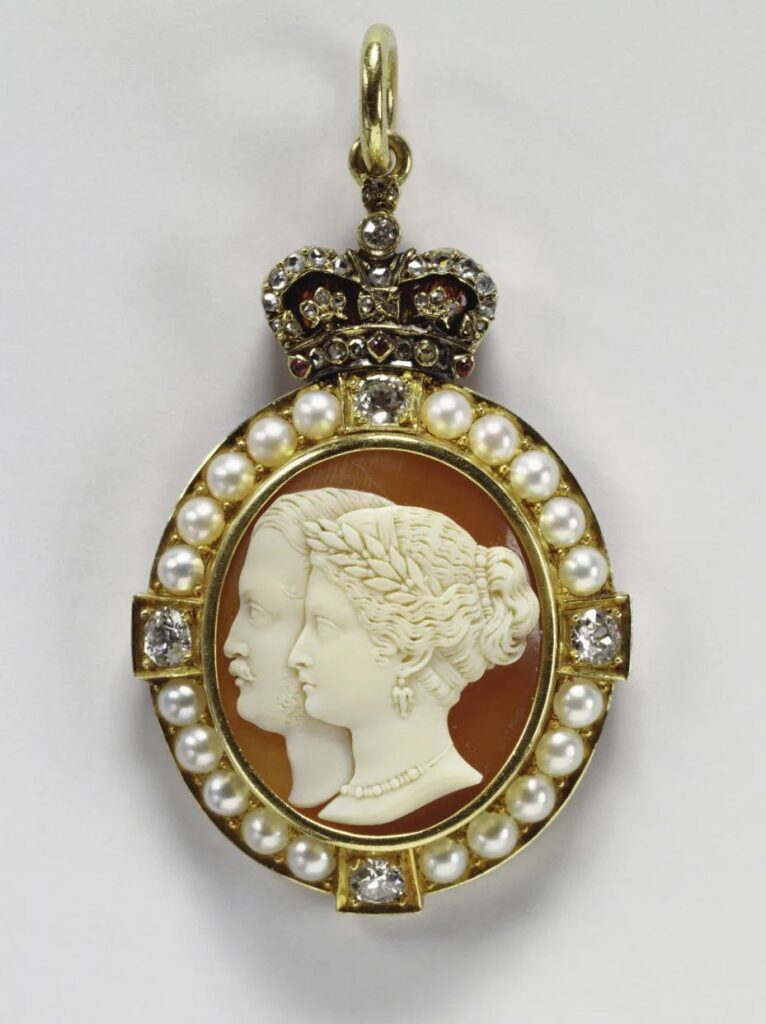
As one of the most artistic forms of jewelry, cameo jewelry is also one of Europe’s most representative traditional jewelry techniques, profoundly influencing modern jewelry. For modern designers wanting to express classical elegance and court atmosphere in jewelry, cameos are an unparalleled choice.
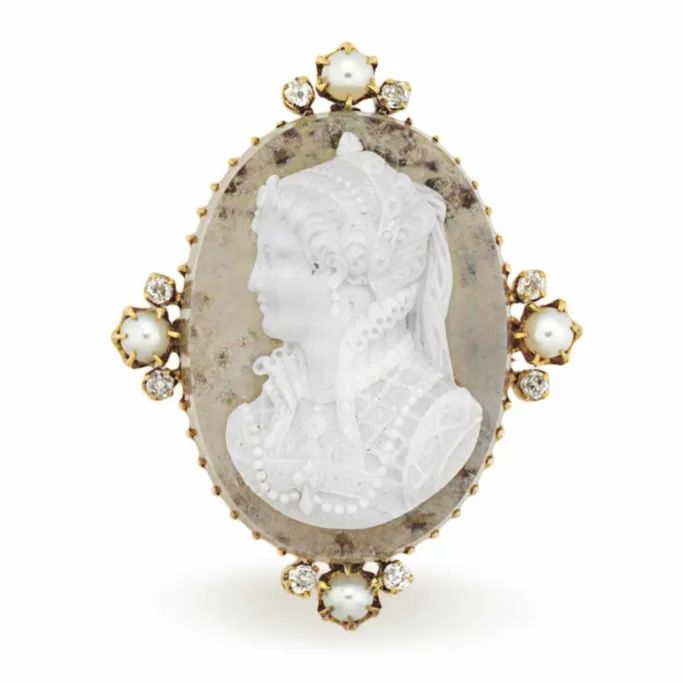
Tiffany & Co. carved agate brooch, sold for $5,000
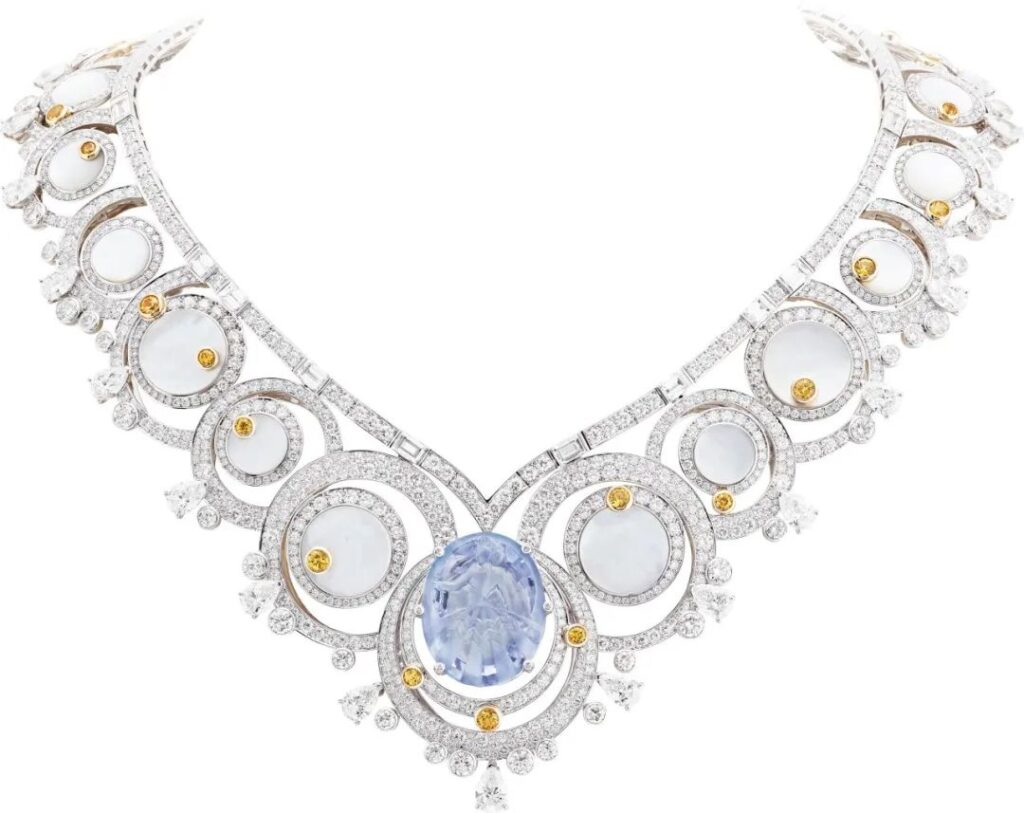
Ballet Précieux high jewelry collection
Corps de Ballet necklace featuring a 36.82-carat carved sapphire centerpiece
Breguet has also frequently used shell carving techniques in their Reine de Naples series dials. The themes are diverse, including traditional zodiac signs, floral designs, and classical mythology, as well as personalized portraits, custom designs, and collaborations with other art forms.
Artisans utilize the color differences between layers of varying depths to transform the dial into a miniature sculptural artwork. After selecting shell materials with fine texture and uniform color, they carefully polish according to the design draft.
Throughout the entire shell-carved dial creation process, they need to continually adjust and correct to ensure every detail reaches perfection. The carving technique creates rich layered contrasts, transitioning from the bright white and ivory of the surface layer to the near-dark brown of the lower layer.
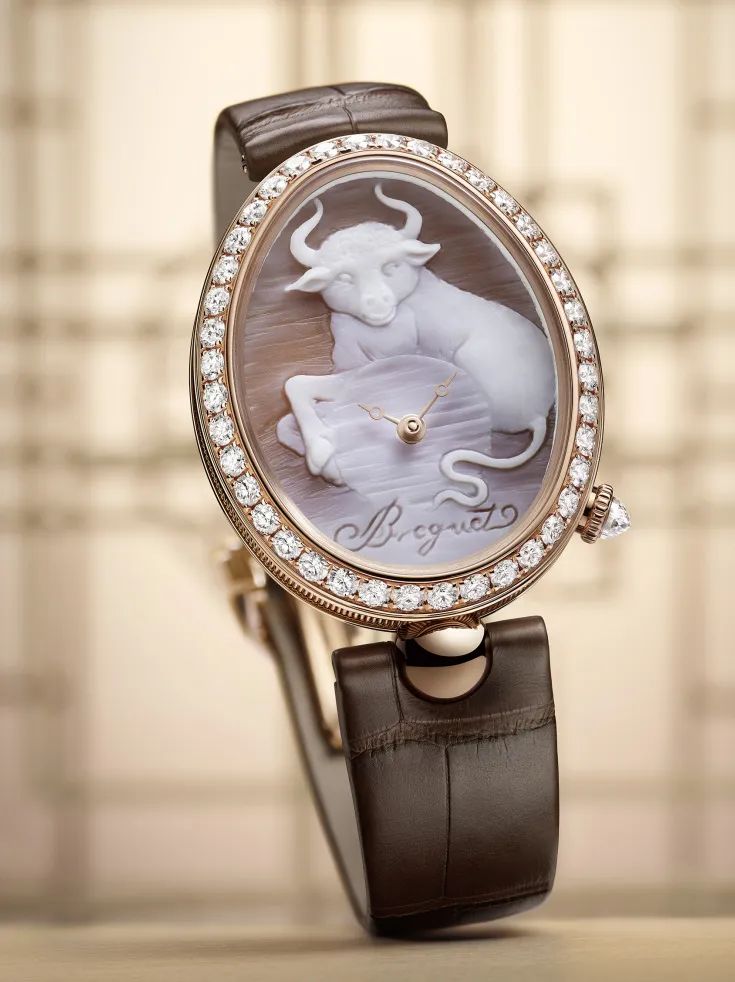
Reine de Naples series
8955 shell relief wristwatch
Besides updating carving themes, the design of relief jewelry has also become more trendy. Designers use carved gemstones as the main stone, complemented by various gems and diamonds, making cameo jewelry more luxurious.
This method not only highlights the exquisite craftsmanship of the carved gemstones but also adds more depth and dynamic beauty to the work through the contrast of colors and luster of different gems.
Designer Hemmerle’s approach to relief design is evolving with the times, combining relief with similarly colored wood and boldly using inverted-set diamonds, creating unique interest through the combination of different materials.
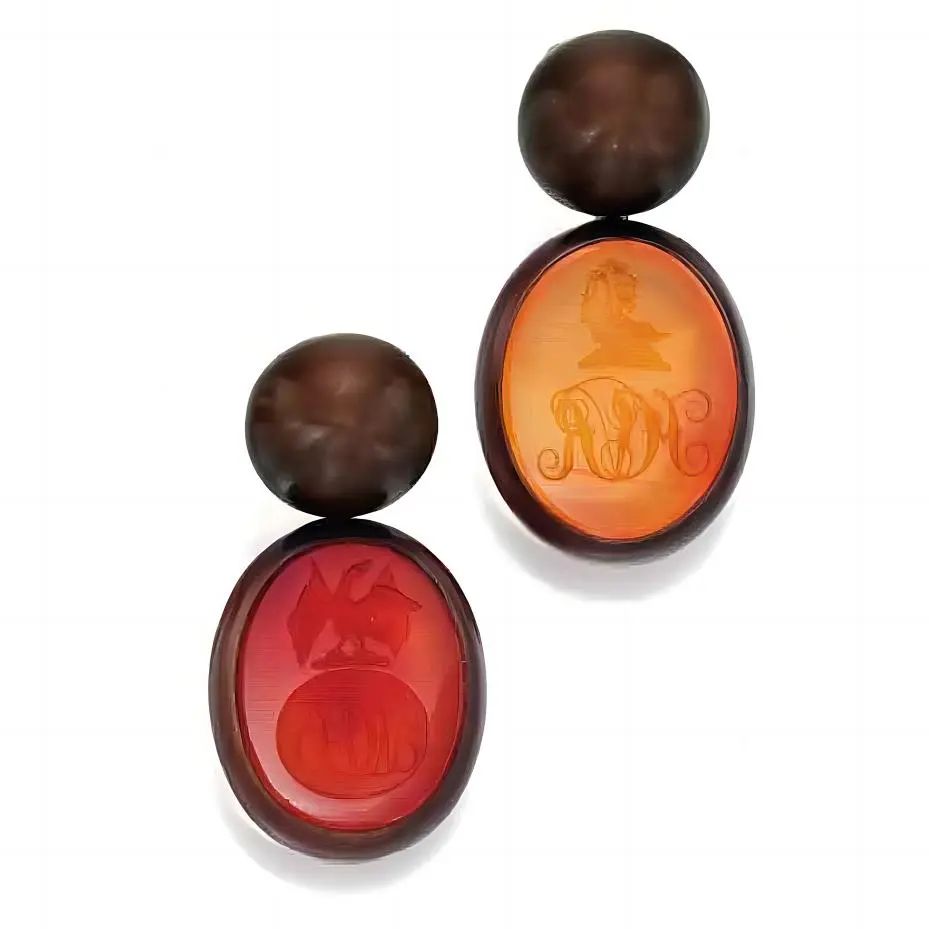
Hemmerle chalcedony ear clips
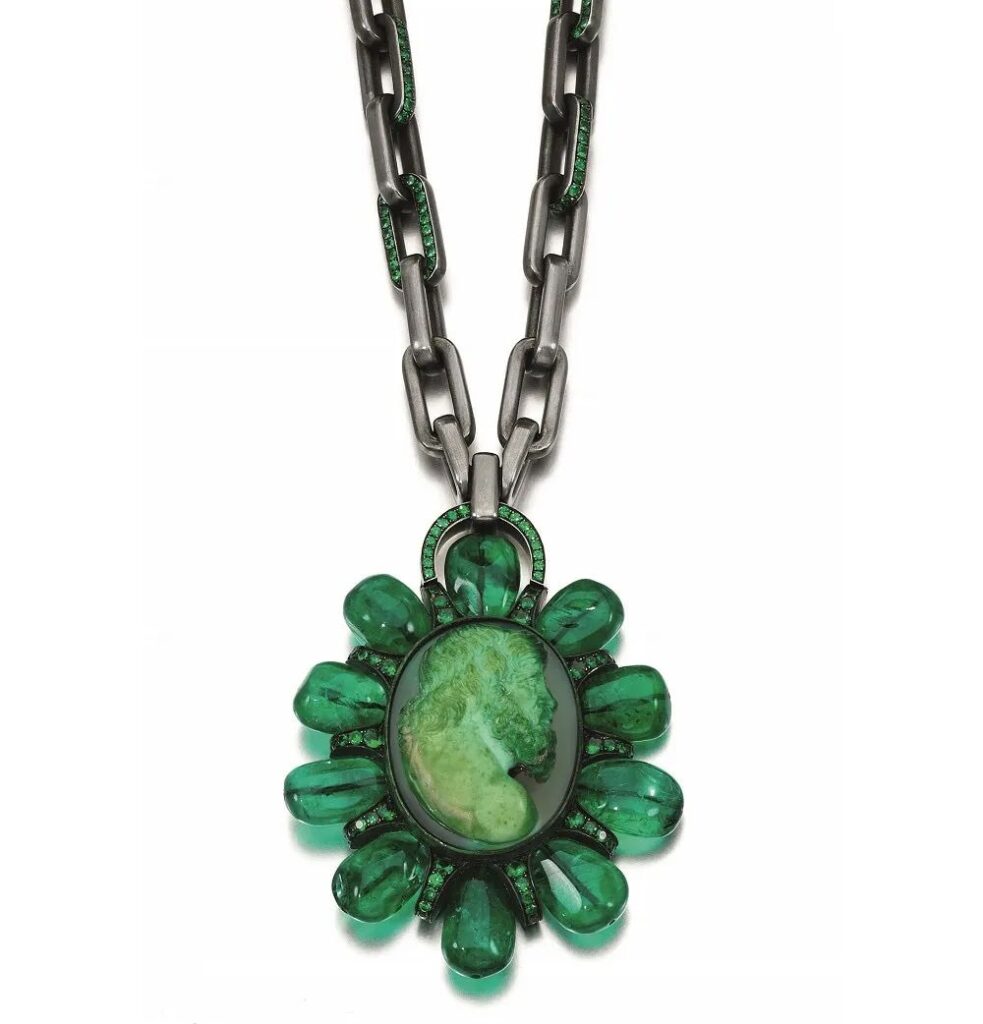
Hemmerle
Neptune cameo pendant necklace
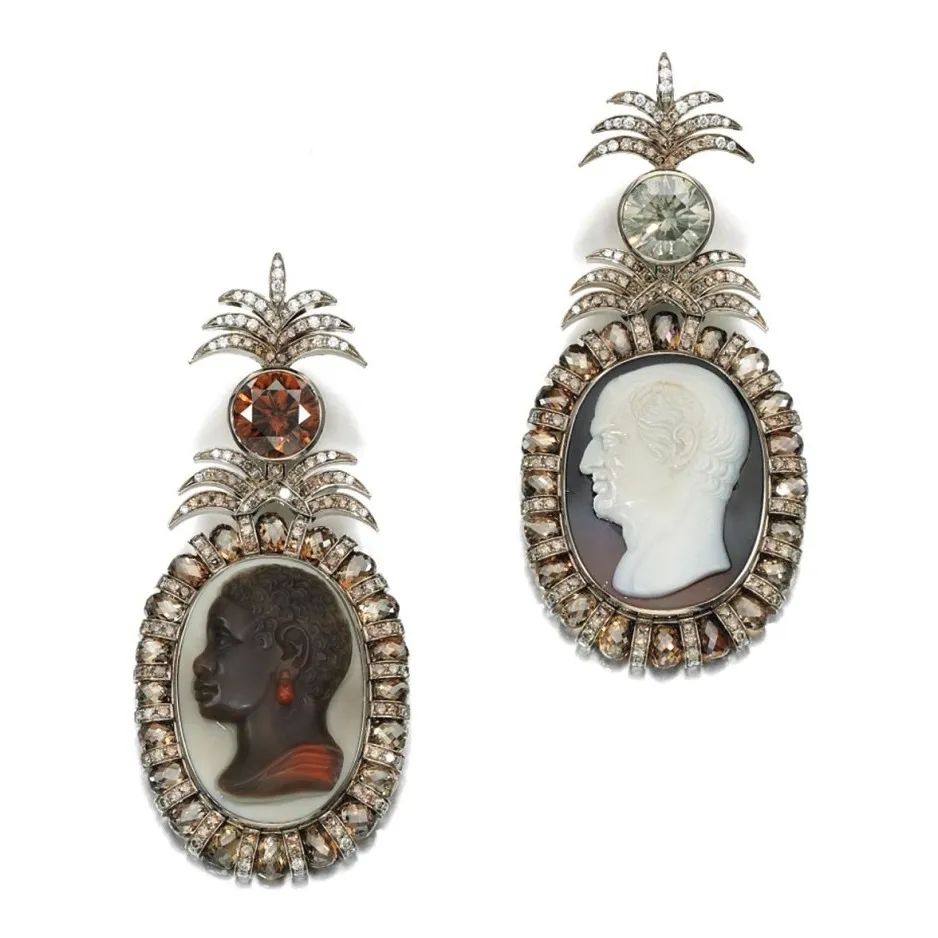
Hemmerle
Carved gemstone earrings
In terms of material selection, cameo jewelry often uses agate, shells, malachite, lapis lazuli, crystal, and even rubies, sapphires, and emeralds. Among these, agate and shells are the most commonly used. The natural gradients and contrasting colors of banded agate and sardonyx agate perfectly showcase the layered and artistic feel of the image.
During the Victorian era, a large number of shell cameos appeared. Compared to agate, shells are easier to carve, lighter in weight, and have softer, more beautiful colors.

Carved agate, pearl, and diamond brooch, sold for 47,500 Swiss francs
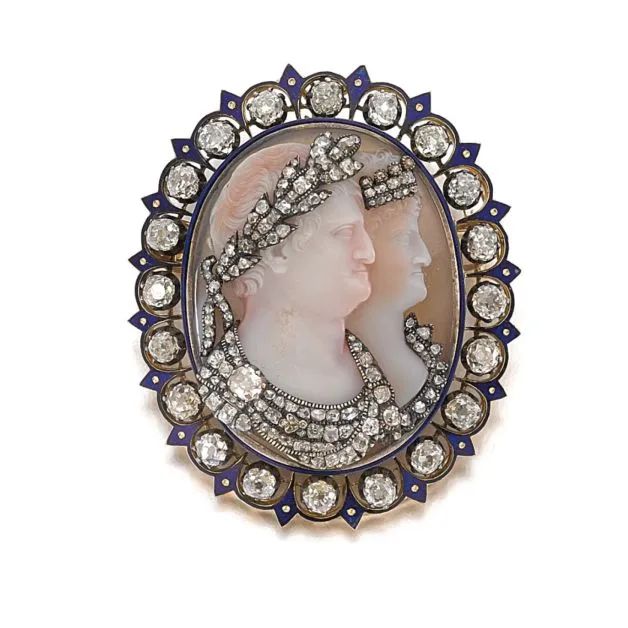
Diamond, enamel, and carved chalcedony brooch, sold for 52,500 Swiss francs
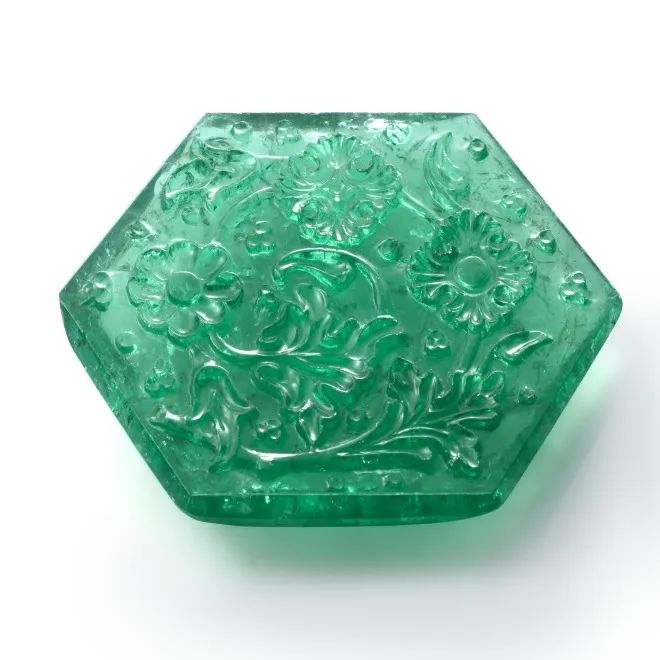
Bérénice carved emerald
It’s worth noting that not all shells are suitable for carving. Most shell cameos we see today are carved from a type of sea snail called the helmet shell. The interior of this shell presents varying shades of reddish-brown, contrasting with the soft white of the shell’s surface, making the carving more distinct. It’s an ideal choice for creating cameo jewelry.
Besides this, shells with pink interiors like the queen conch, mother-of-pearl with strong pearlescent luster, and tiger cowrie shells with spotted patterns are also used as materials for shell cameos.
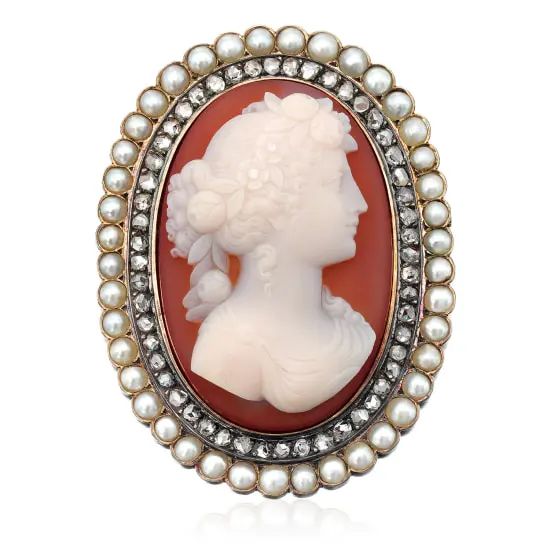
The earliest cameo jewelry designs were inspired by myths and legends, with images of gods and ancient myths becoming core themes in jewelry design. Cameo jewelry also carried people’s beliefs and wishes; young girls would use them as talismans to convey their hearts’ desires, hoping to realize their beautiful wishes. In this sense, cameos from thousands of years ago had a similar significance to the now-popular Yonghe Temple bracelets!
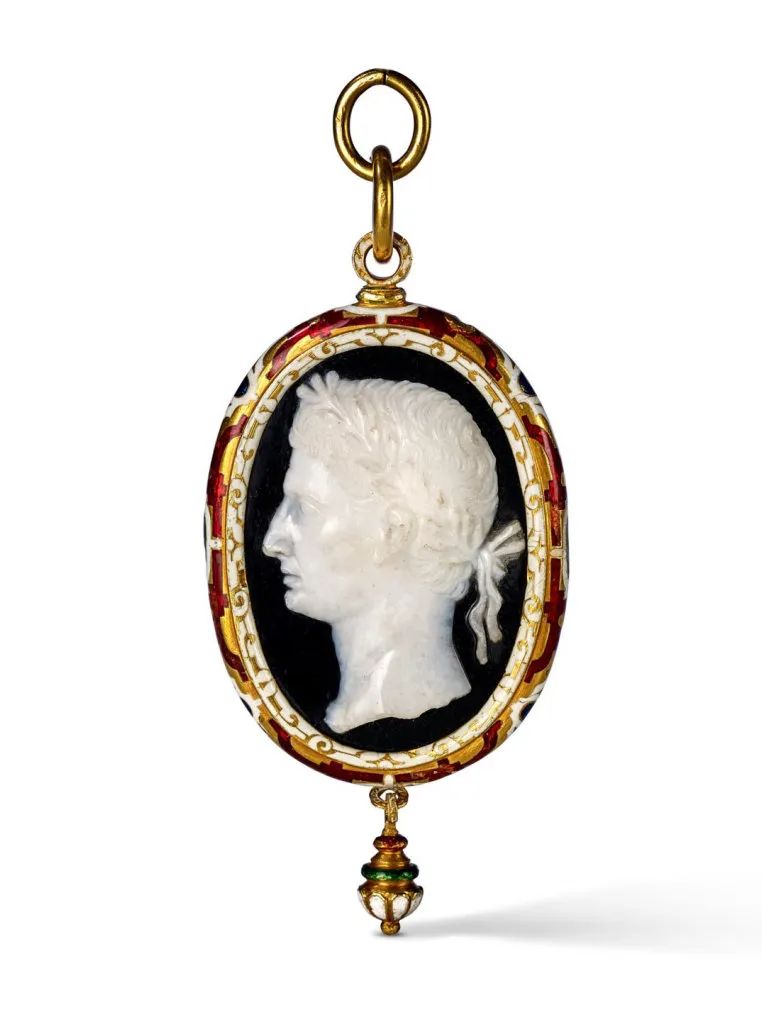
Auguste carved agate pendant, sold for $17,640
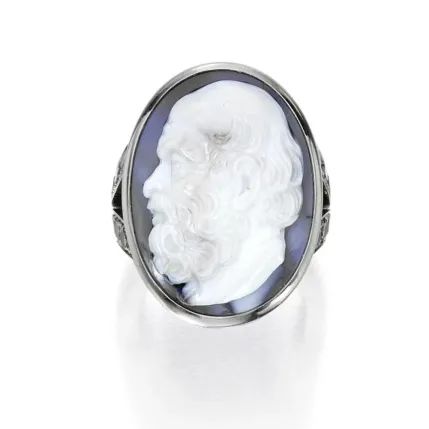
Hemmerle diamond and carved agate ring with Socrates profile, sold for $13,750
Later, monarchs wore cameo badges during ceremonies as symbols of their status. They also awarded cameo medals carved with their own portraits to meritorious subjects, recognizing their contributions and honors.
This became a tradition that European royalty continues to this day. During this time, cameo works expanded to include themes of monarchs’ portraits, heroes, and philosophers. Although it was a continuation of Greek style, it carried more religious and power connotations.
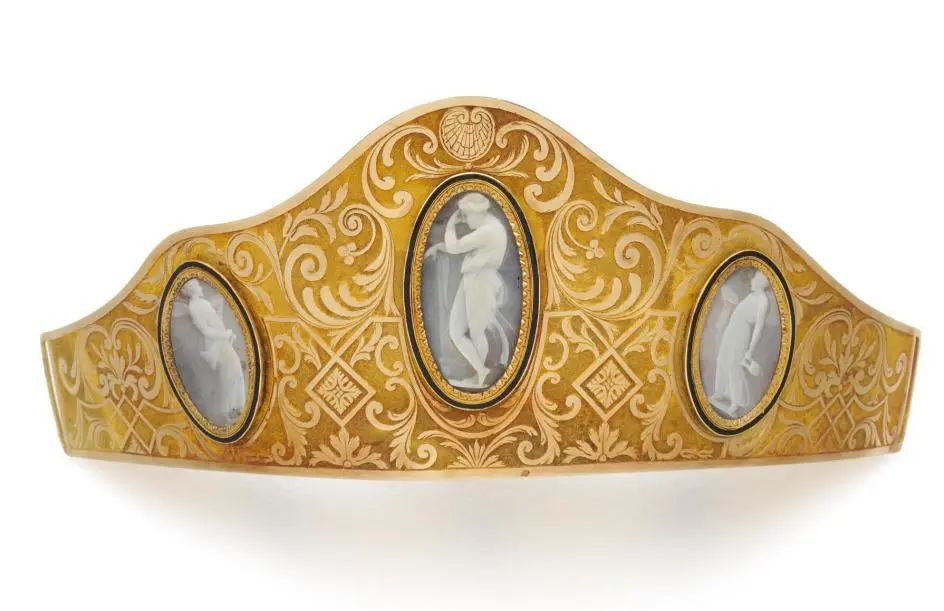
Cameo crown
When the light of the 14th-century Renaissance broke through the long night of the Middle Ages, the prosperity of neoclassical art awakened people’s love and pursuit of ancient Greek aesthetics. By the 19th century, archaeological discoveries of ancient Greek and Roman ruins intensified interest in mythological stories, giving cameo jewelry its “cultural and creative attributes.”
Victorian-era antique relief jewelry began to feature ancient Roman patterns, such as the story of Cupid and Psyche, Diana the huntress, Bacchus, combined with elements like butterflies, crescents, and plants to form unique designs.
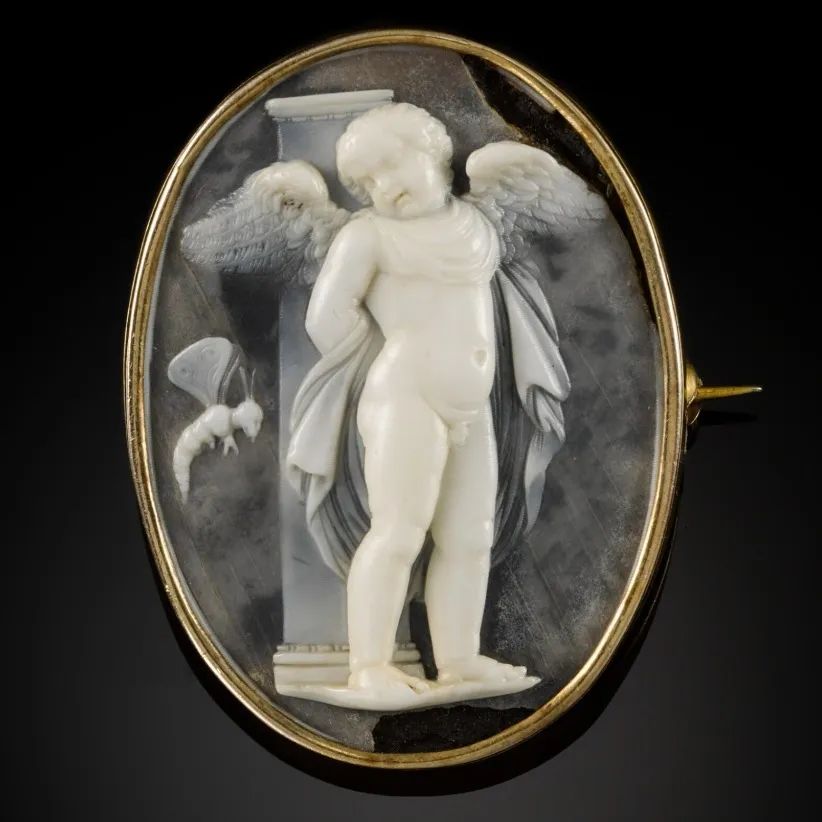
Cameo brooch depicting Cupid and Psyche in butterfly form
Spanning thousands of years, the charm of cameo jewelry remains unchanged and deeply loved. In the world of jewelry, while sparkling faceted gemstones are eye-catching, the intrigue and allure contained in carved gemstones are truly remarkable.
Through this ancient technique, countless jewelry artists have realized their extraordinary visions, ingeniously incorporating ancient cultures, mysterious legends, and personal unique aesthetics into gemstones, creating many breathtaking masterpieces.
Each piece of cameo jewelry carries a unique story or a deep memory. Whether it’s a meticulously carved portrait or a meaningful pattern, they all demonstrate the deep emotions and romance inherent in cameo jewelry.
The Unexpected Cultural Icon of Centuries Past: Unveiling the Allure of Cameo Jewelry!
Tweet
